-
The Hunchback of Notre-Dame
Victor Hugo
Hardcover (Jaico Publishing House, Jan. 1, 2019)JAICO ILLUSTARTED CLASSICS SERIES is a collection of beloved childrens classics read by generations all over the world. Rich with adventures and thrills, these immortal stories with vivid illustrations are designed to delight young readers. THE HUNCHBACK OF NOTRE-DAME is a story about a priest who falls for a beautiful gypsy girl, Esmeralda. Unable to control his infatuation any longer, he attempts to kidnap her with the help of Quasimodo, the hunchback bell ringer of Notre-Dame. The story forms an intricate web of love, hate, obsession and despair around the characters and shows that how love can elevate, destroy or even beautify people. VICTOR HUGO was a French poet, novelist and dramatist of the Romantic Movement. He is considered one of the greatest and best-known French writers.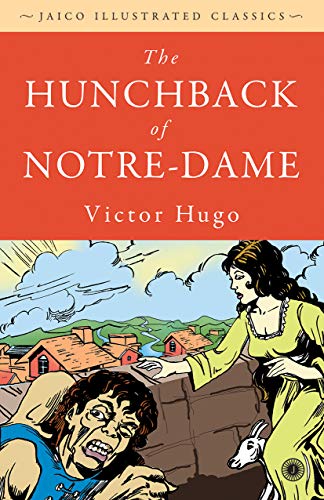 W
W
-
The Hunchback of Notre Dame
Victor Hugo
eBook (E-BOOKARAMA, Dec. 24, 2018)Published in 1831 in French as "Notre-Dame de Paris", "The Hunchback of Notre Dame" is a novel written by Victor Hugo that follows both the Gothic and Romantic literary traditions. Overall, this means the novel uses fiction to display aspects of horror, death, and romance. In addition to those traits, Hugo also includes other major themes, like the negatives of the legal system of the day and capital punishment. This viewpoint can clearly be seen in some of the heartbreaking events in the novel that come from wrongful convictions. Overall, the tragic end falls in line with the Gothic tradition.The novel is set in 15th-century Paris and powerfully evokes medieval life in the city during the reign of Louis XI. Quasimodo is the hunchbacked horribly deformed bell ringer at the cathedral of Notre-Dame. Once beaten and pilloried by an angry mob, he has fallen in love with the beautiful gypsy Esmeralda, who took pity on him during this ordeal. When the scheming archdeacon Frollo, who is also obsessed with Esmeralda, discovers that she favours Captain Phoebus, he stabs the captain, and Esmeralda is accused of the crime. Quasimodo attempts to shelter Esmeralda in the cathedral, but she eventually hangs; in his grief and despair, Quasimodo throws Frollo from the cathedral tower. Later, two skeletons are found in Esmeralda’s tomb—that of a hunchback embracing that of a woman.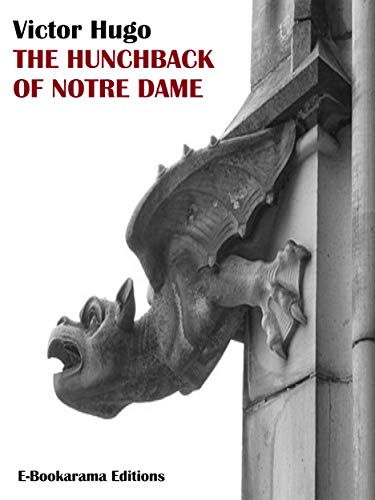
-
The Hunchback of Notre Dame
Victor Hugo
eBook (Moorside Press, July 17, 2013)This ebook includes a biographical introduction, a short, critical analysis of Hugo's work within the historical context and a brief introduction to this work.Originally published in 1831 as Notre-Dame de Paris, The Hunchback of Notre Dame relates the story of Quasimodo, his love for the Gypsy girl Esmerelda, and the measures he takes when she is threatened by the authority figure of Claude Frollo. Hugo's work has spawned many interpretations on film, television and in the theatre, and like Les Miserables, it might be considered less famous as a book than it is on the wide screen.The novel provides an expression of Hugo's Romantic outlook that is early enough in his career not to be tainted by the political landscape but which instead makes use of established systems of authority in the Church and the Army. Clearly this is made necessary by setting the story at the end of the fifteenth century, but in doing so it shows Hugo in his earlier incarnation as the Romantic rather than the Politician.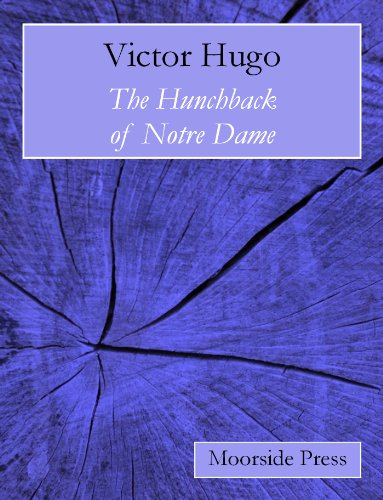
-
The Hunchback of Notre Dame
Victor Hugo, Isabel F. Hapgood
eBook (Musaicum Books, June 3, 2019)This eBook edition of "The Hunchback of Notre Dame" has been formatted to the highest digital standards and adjusted for readability on all devices. The Hunchback of Notre Dame is a French Romantic/Gothic novel by Victor Hugo. The novel's original French title, Notre-Dame de Paris, is a double entendre: it refers to Notre Dame Cathedral, on which the story is centred, and Esmeralda, the novel's main character who is "our lady of Paris" and the centre of the human drama within the story. The story is set in Paris in 1482 during the reign of Louis XI. The gypsy Esmeralda (born as Agnes) captures the hearts of many men, including those of Captain Phoebus and Pierre Gringoire, but especially Quasimodo and his guardian Archdeacon Claude Frollo. Frollo is torn between his obsessive lust for Esmeralda and the rules of Notre Dame Cathedral. He orders Quasimodo to kidnap her, but Quasimodo is captured by Phoebus and his guards, who save Esmeralda.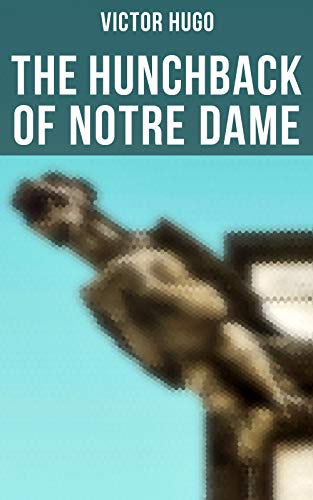
-
The Hunchback of Notre Dame
Victor Hugo, Isabel Hapgood
eBook (United Holdings Group, Dec. 19, 2010)The Hunchback of Notre Dame is a classic novel written by Vicor Hugo and first published in 1831. Set in medieval Paris, Victor Hugo’s powerful historical romance The Hunchback of Notre-Dame has resonated with succeeding generations ever since its publication in 1837. It tells the story of the beautiful gypsy Esmeralda, condemned as a witch by the tormented archdeacon Claude Frollo, who lusts after her. Quasimodo, the deformed bell ringer of Notre-Dame Cathedral, having fallen in love with the kindhearted Esmeralda, tries to save her by hiding her in the cathedral’s tower. When a crowd of Parisian peasants, misunderstanding Quasimodo’s motives, attacks the church in an attempt to liberate her, the story ends in tragedy.
-
THE HUNCHBACK OF NOTRE DAME
Victor Hugo
eBook (, Jan. 20, 2014)This unique edition includes hand-crafted annotations:- Historical background‘The Hunchback of Notre Dame’ was first published in in 1831.Victor Hugo was born in 1802 and died in 1885. He left a legacy of outstanding novels that continue to captivate minds and hearts of the audience even after more than hundred fifty years after its first publication. Vivid images and gripping plot engages readers more than anything. Especially ‘The Hunchback of Notre-Dame’ is a must read for all.‘The Hunchback of Notre-Dame’ is a moving story of a hunchback named Quasimodo, a bell-ringer living in the Notre Dame cathedral church in Paris, and a beautiful gipsy street dancer Esmeralda. It is a very engaging story that keeps the reader craving for more.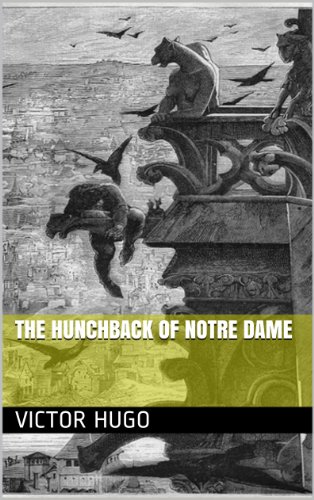
-
The Hunchback of Notre-Dame I: Bilingual book
Victor Hugo
Paperback (CreateSpace Independent Publishing Platform, March 25, 2017)Bilingual classic in French and English.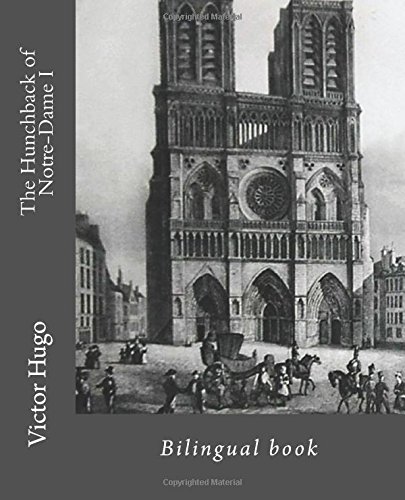 W
W
-
The Hunchback of Notre Dame
Victor Hugo, Jim Killavey
Audio CD (The Classic Collection, Dec. 18, 2012)The Hunchback of Notre Dame (original French title, Notre-Dame de Paris) is set in 1482 in Paris, in and around the cathedral of Notre Dame de Paris. It tells the story of a poor Gypsy girl (La Esmeralda) and a misshapen bell-ringer (Quasimodo), one of the most colorful characters in literature, who falls in love with her. They are both victimized by a corrupt priest (Claude Frollo) and begin an adventure filled with great peril and great heroism. The book was enormously popular in France and became so in translations in other countries. Its popularity has continued to this day.
-
The Hunchback of Notre-Dame
Victor Hugo
eBook (Clydesdale, April 20, 2019)The Hunchback of Notre-DameVictor Hugo (1802-1885)Translated by Isabel F. Hapgood in 1888
-
The Hunchback Of Notre Dame
Victor Hugo, Frederic Shoberl
eBook (Clydesdale, July 14, 2018)"The Hunchback Of Notre Dame" is a French novel written by "Victor Hugo". This novel was published in 1831, which is centered by the french title "Notre Dame Cathedral"
-
The Hunchback Of Notre Dame: or, Notre Dame de Paris
Victor Hugo
eBook (HarperPerennial Classics, Feb. 11, 2014)Esmeralda is a beautiful gypsy woman who captures the heart of many men including Quasimodo, the titular hunchback who lives in secret at Notre Dame. Saved by Esmeralda’s kindness, Quasimodo falls in love and sets out to save her from the clutches of those who mean to harm her, including his deceptive adoptive father, Archdeacon Claude Frollo.Originally written as a means of highlighting the value of Gothic architecture, The Hunchback of Notre Dame or Notre Dame de Paris was also one of the first novels to feature lower caste protagonists. The Hunchback of Notre Dame has been translated into English many times and has been adapted into plays, and feature-length films, including the 1996 Disney animated feature of the same name.HarperPerennial Classics brings great works of literature to life in digital format, upholding the highest standards in ebook production and celebrating reading in all its forms. Look for more titles in the HarperPerennial Classics collection to build your digital library.
-
The Hunchback of Notre Dame
Victor Hugo, Chrysta Classics, Isabel F. Hapgood
eBook (Chrysta Classics, Jan. 19, 2017)The Hunchback of Notre-Dame (French: Notre-Dame de Paris) is a French Romantic/Gothic novel by Victor Hugo, published in 1831. The original French title refers to Notre Dame Cathedral, on which the story is centered. English translator Frederic Shoberl named the novel The Hunchback of Notre Dame in 1833 because at the time, Gothic novels were more popular than Romance novels in England. The story is set in Paris, France in the Late Middle Ages, during the reign of Louis XI.BONUS :• The Hunchback of Notre Dame Audiobook.• Biography of Victor Hugo.